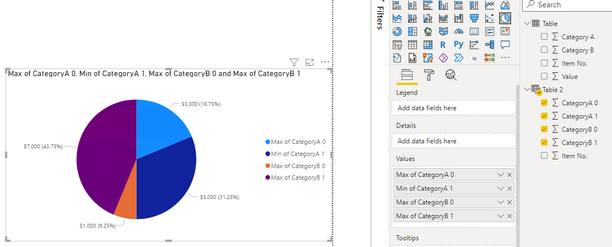- Power BI forums
- Updates
- News & Announcements
- Get Help with Power BI
- Desktop
- Service
- Report Server
- Power Query
- Mobile Apps
- Developer
- DAX Commands and Tips
- Custom Visuals Development Discussion
- Health and Life Sciences
- Power BI Spanish forums
- Translated Spanish Desktop
- Power Platform Integration - Better Together!
- Power Platform Integrations (Read-only)
- Power Platform and Dynamics 365 Integrations (Read-only)
- Training and Consulting
- Instructor Led Training
- Dashboard in a Day for Women, by Women
- Galleries
- Community Connections & How-To Videos
- COVID-19 Data Stories Gallery
- Themes Gallery
- Data Stories Gallery
- R Script Showcase
- Webinars and Video Gallery
- Quick Measures Gallery
- 2021 MSBizAppsSummit Gallery
- 2020 MSBizAppsSummit Gallery
- 2019 MSBizAppsSummit Gallery
- Events
- Ideas
- Custom Visuals Ideas
- Issues
- Issues
- Events
- Upcoming Events
- Community Blog
- Power BI Community Blog
- Custom Visuals Community Blog
- Community Support
- Community Accounts & Registration
- Using the Community
- Community Feedback
Register now to learn Fabric in free live sessions led by the best Microsoft experts. From Apr 16 to May 9, in English and Spanish.
- Power BI forums
- Forums
- Get Help with Power BI
- DAX Commands and Tips
- Re: Create a pie chart for line items with multipl...
- Subscribe to RSS Feed
- Mark Topic as New
- Mark Topic as Read
- Float this Topic for Current User
- Bookmark
- Subscribe
- Printer Friendly Page
- Mark as New
- Bookmark
- Subscribe
- Mute
- Subscribe to RSS Feed
- Permalink
- Report Inappropriate Content
Create a pie chart for line items with multiple tags (binary in nature 1,0)
I have a dataset which looks like this.
| Item No. | Category A | Category B | Value |
| 1111 | 1 | 0 | $1000 |
| 2222 | 1 | 1 | $2000 |
| 333 | 0 | 1 | $3000 |
| 4444 | 1 | 1 | $2000 |
I want to create a pie chart which populates the values of both category A and B.
Solved! Go to Solution.
- Mark as New
- Bookmark
- Subscribe
- Mute
- Subscribe to RSS Feed
- Permalink
- Report Inappropriate Content
Hi @Anonymous ,
Here are the steps you can follow:
1. Create calculated table.
Table 2 =
SUMMARIZE('Table','Table'[Item No.],
"CategoryA 1",CALCULATE(SUM('Table'[Value]),FILTER(ALL('Table'),'Table'[Category A]=1)),
"CategoryA 0",CALCULATE(SUM('Table'[Value]),FILTER(ALL('Table'),'Table'[Category A]=0)),
"CategoryB 1",CALCULATE(SUM('Table'[Value]),FILTER(ALL('Table'),'Table'[Category B]=1)),
"CategoryB 0",CALCULATE(SUM('Table'[Value]),FILTER(ALL('Table'),'Table'[Category B]=0))
)2. Result:
All set to Max.
Please click here for the pbix file
Best Regards,
Liu Yang
If this post helps, then please consider Accept it as the solution to help the other members find it more quickly
- Mark as New
- Bookmark
- Subscribe
- Mute
- Subscribe to RSS Feed
- Permalink
- Report Inappropriate Content
Hi @Anonymous ,
Here are the steps you can follow:
1. Create calculated table.
Table 2 =
SUMMARIZE('Table','Table'[Item No.],
"CategoryA 1",CALCULATE(SUM('Table'[Value]),FILTER(ALL('Table'),'Table'[Category A]=1)),
"CategoryA 0",CALCULATE(SUM('Table'[Value]),FILTER(ALL('Table'),'Table'[Category A]=0)),
"CategoryB 1",CALCULATE(SUM('Table'[Value]),FILTER(ALL('Table'),'Table'[Category B]=1)),
"CategoryB 0",CALCULATE(SUM('Table'[Value]),FILTER(ALL('Table'),'Table'[Category B]=0))
)2. Result:
All set to Max.
Please click here for the pbix file
Best Regards,
Liu Yang
If this post helps, then please consider Accept it as the solution to help the other members find it more quickly
- Mark as New
- Bookmark
- Subscribe
- Mute
- Subscribe to RSS Feed
- Permalink
- Report Inappropriate Content
Hi @Anonymous ,
Like Amit mentioned you should look into unpivoting the data into a format where you have a category column describing if a row belong to A or B category then use the binary data as the value.
Did I answer your question? Mark my post as a solution!
Proud to be a Super User!
- Mark as New
- Bookmark
- Subscribe
- Mute
- Subscribe to RSS Feed
- Permalink
- Report Inappropriate Content
@Anonymous , What will the legend.
If you have two measures category A and Category B, then you can have pie on that without legend.
You can unpivot Category A and Category B use the new column as Legend, the 1/0 column as details and value as value
Microsoft Power BI Learning Resources, 2023 !!
Learn Power BI - Full Course with Dec-2022, with Window, Index, Offset, 100+ Topics !!
Did I answer your question? Mark my post as a solution! Appreciate your Kudos !! Proud to be a Super User! !!
Helpful resources

Microsoft Fabric Learn Together
Covering the world! 9:00-10:30 AM Sydney, 4:00-5:30 PM CET (Paris/Berlin), 7:00-8:30 PM Mexico City

Power BI Monthly Update - April 2024
Check out the April 2024 Power BI update to learn about new features.

| User | Count |
|---|---|
| 49 | |
| 26 | |
| 21 | |
| 15 | |
| 12 |
| User | Count |
|---|---|
| 57 | |
| 49 | |
| 44 | |
| 19 | |
| 18 |


